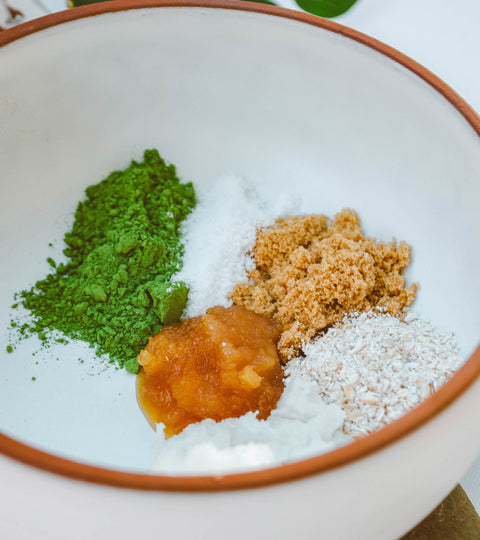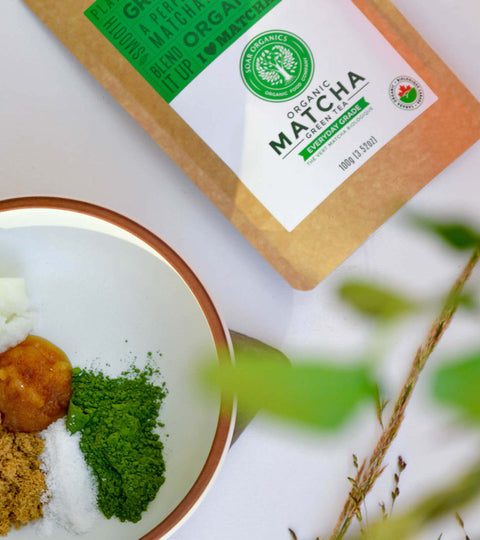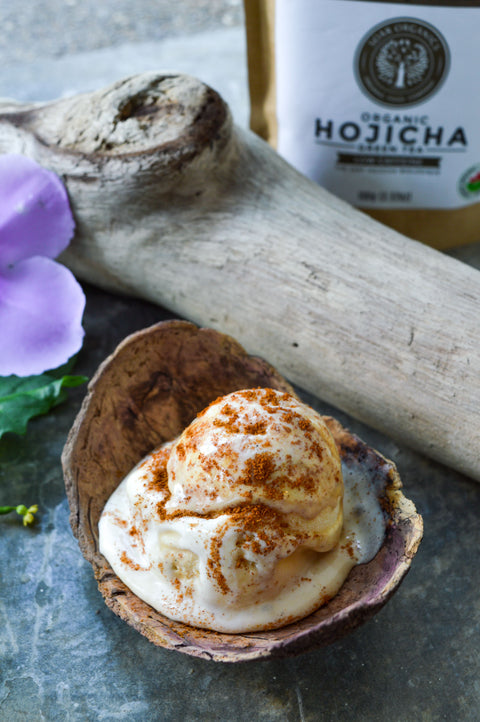Blog contribution by Sierra Wright, Holistic Nutritionist.
Skin, the human body’s largest organ, is our flexible protective barrier against our external environment, keeping us protected from harmful things such as moisture, cold, UV rays, germs, toxic substances, and viruses. The regulation of our body temperature is also another important role our skin is a part of by preventing dehydration, and acting as a reflex for sensations such as hot, cold, pressure, itchiness, or pain. It’s a real life lie detector for what’s happening on a deeper level within our cellular matrix. Our skin reflects the presence of free radical damage, toxicity, cellular DNA repair capacity, telomere shortening, microRNA Regulation, inflammation, the presence of advanced glycation end (AGE) products, and collagen breakdown or lack of collagen synthesis. [1]
The problem I have with many skincare products is that many are made of harsh chemicals or ingredients while higher quality products come with a heavier price tag, and often wind up at the back of the bathroom cabinet. The most significant shift in my skin’s health took place when I began using natural, organic, easily absorbable nutrients that my body not only externally loves, but also internally thrives upon. It’s simple: wholesome food!
I’ve created this protocol that I personally use as a nutritionist for healthy, vibrant and glowing skin to optimize my body’s overall health.
The Protocol for Healthy Glowing Skin
Hydrate sufficiently, every day.
As warmer months are in full effect, Summer brings an abundance of sunshine and endorphin-boosting vitamin D rays. All of this means that it is even more important to maintain a quality skincare routine throughout the entire year. The warmer weather and stronger UV rays can lead to dehydration of the skin and damage to our cells. The skin contains approximately 30% water, which contributes to plumpness, elasticity, and resiliency. This means that without enough water in our body, we are allowing our skin to be less than its fullest potential of health. [4] Dryness is also commonly associated with the shifting of weather caused by lack of oil in the skin. Most people use moisturizers or oils to prevent dryness of the skin, but lack the rehydration part. While dehydrated skin may not cause damage, it can leave its function to be less effective such as turning over new cell growth, and lessening natural detoxification of impurities. All of this can lead to more experiential problems like eczema, rosacea, pimples, and sensitivity. Unfortunately, many people who want to get rid of dehydrated skin buy products that actually cause chemical dehydration, particularly alcohol-based ones. Skin is extremely important to humans, and taking care of it on a daily basis is essential for optimizing our well-being on a cellular level. This is why what we put into our bodies is as important as what we put on our skin.
What to do? Consume quality fluids of pure mineralized water.
- 0.66 x your weight in lbs = Optimal water in ounces (non-exercise day)
- Optimal water/32 = Optimal H20 in litres (non-exercise day)
- Add 0.5-1.0L of pure filtered water on exercise days.
Nutrient Rich Foods that Support Cellular Health
- Rich Minerals: Green vegetables, microgreens, squashes, algaes, and sea vegetables
- Naturally Occurring Vitamins: Colourful vegetables and fruits, grass fed meats, bone marrow, pasture raised eggs, etc.
- Quality Proteins: Grass fed meats, poultry, wild caught fish, seafood, soaked and sprouted legumes, and pasture raised eggs
- Antioxidants & Plant Compounds: Matcha, berries, sea vegetables, mushrooms (medicinal and cooking)
- Healthy Fats: Avocado, nuts, seeds, ghee, grass fed butter, quality oils (extra virgin olive oil, flaxseed oil, avocado oil, coconut oil, and walnut oil)
- Probiotics: Fermented foods, such as kimchi, sauerkraut, kefir, miso, tempeh, and natto
Exfoliate 1-3 Times a Week
Exfoliation is essential for natural cell turnover that supports the ‘glow inside and out’ appearance. This happens by rubbing the skin in a gentle manner to encourage our dead cells in the epidermis of the skin layer to be renewed constantly. Without this practice, our skin can appear dull due to stale cells hiding underneath the new-er, healthi-er glowing ones. [2] This exfoliation practice also helps penetrate skin cells where moisture can be secured into the tissues to help combat dry patches, and physical impurities. Technique is important when exfoliating as the goal is to remove the dead cells without abrading the skin. If you feel burning or see redness, it’s too harsh. Your complexion should feel refreshed, vibrant, and ready to take the world by the reins!

DIY Vibrancy Facial and Body Exfoliant
The secret ingredient: Matcha
Matcha is a finely ground powder made from specially grown green tea leaves of the Camellia Sinensis plant. It is concentrated in an abundance of nutrients that have a wide range of beneficial properties that support all systems of our body, including our integumentary system that consists of our skin, nails, hair, and exocrine glands. When we think of matcha, we may automatically think it’s something we get from our local cafe or make at home in latte form; but matcha is an incredibly powerful ingredient that can also provide amazing benefits used externally via absorption through the largest organ - our skin!
Matcha contains antioxidants (polyphenols and catechins) which help battle the harmful effects of UV radiation and free radicals. What is an antioxidant? The term typically refers to naturally occurring substances, which prevent or slow oxidation and damage to our cells. You should know that matcha has around 63,000 ORAC units (Oxygen Radical Absorbance Capacity), which is 50 times greater than the amount found in regular brewed green tea due to the utilization of the whole tea leaf powder VS steeping from the leaf. Antioxidants also help relieve inflammation of tissues, and the chlorophyll content in matcha makes it an amazing toxin cleanser, supporting detoxification pathways, and ultimately making your skin glow.
In addition to all the benefits for our skin, another reason I love using matcha as many ways as possible is because it’s considered a very low carbon footprint and sustainable harvesting plant. Tea fields are reused over and over again, making it an environmentally friendly form of harvesting. Matcha plants typically live up to half a century or more, making it a very sustainable option in comparison to other crops. It is also the only kind of tea that utilizes the entirety of the leaf, meaning no waste, and concentrated health benefits.
Creating your own DIY exfoliant is cost effective since you most likely have all the ingredients already in your kitchen (yay for multi-purpose items), and your body will recognize what you are feeding it via skin.
Moisturize Every Single Day
Locking in moisture is extremely important as it can help protect against irritation, prevent dryness, soothe the skin, and support healthy cell growth. Moisture in your skin helps it repair itself constantly. Our skin can only perform its task as the body's protective barrier if it has sufficient moisture. In combination with maintaining hydration through fluid intake, we can enhance hydration of the cells through skin care practices that lock in moisture to help prevent water loss of the skin. One of the best times for moisture is after exfoliating since you’ve opened up space for moisture to be locked into the skin tissue.
The Round Up
Skin care is essential to our health and lies far beyond topical creams or serums. The link between the health of our skin and the intake of vitamins, minerals, plant compounds, antioxidants, and essential fatty acids is an important piece for maintaining a youthful complexion. Investing time for a daily commitment to a skincare routine allows our skin to express itself to its fullest potential. [3]
References:
- [1] Zhang, Shoubing et al. “Fighting against Skin Aging” Cell Transplant, 27(5), 2018 May, 729-738.
- [2] https://www.ncbi.nlm.nih.gov/books/NBK279255/
- [3] Schagen, Sikle K. et al. “Discovering the link between nutrition and skin aging” Dermato Endocrinology, 4(3), 2012 July 1, 298-307
- [4] https://www.ncbi.nlm.nih.gov/pmc/articles/PMC2908954/#R96



